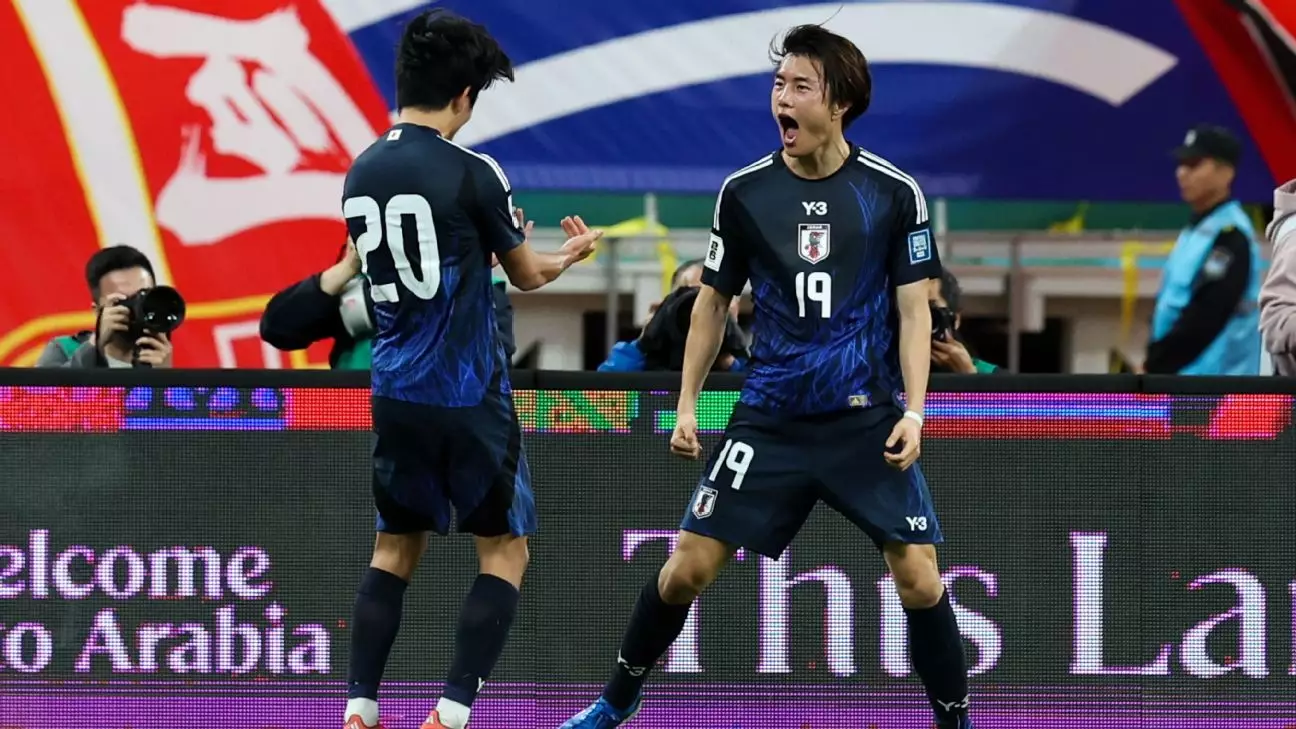As the third round of Asian qualifiers for the 2026 FIFA World Cup approaches its conclusion, Japan’s national team, known as the Samurai Blue, stands poised for an impressive eighth consecutive appearance on the world stage. Their current performance not only highlights their dominance in Group C, where they enjoy a commanding nine-point lead over the nearest contender, but it also reflects a national ambition that reaches far beyond mere qualification. With two key matches upcoming, against Bahrain and Saudi Arabia, Japan is set to secure their spot early next year, signaling their commitment to achieving more than just participation.
The stakes for Japan are not merely about making an appearance; reaching the World Cup is now considered the baseline expectation. Coach Hajime Moriyasu’s recent assertions reveal an ambitious mindset, labeling the team’s goal as not only to qualify but to aim for World Cup glory itself. This notion is audacious, particularly for a team hailing from a continent that has yet to produce a World Cup champion outside of Europe or South America. However, this pursuit of greatness aligns with the Japan Football Association’s “The JFA Pledge for 2050,” which outlines long-term objectives, including winning the World Cup. Japan has set a mid-term target to reach the semifinals by 2030, underlining the seismic shift in their footballing aspirations, especially considering their historical struggle to surpass the Round of 16.
To evaluate Japan’s potential to meet these lofty goals, it is essential to examine several key components, beginning with the composition of their starting lineup. The Samurai Blue’s current squad features players who play vital roles in prestigious European leagues. This reflects a growing strength in terms of both quality and depth. Players like Zion Suzuki in goal and a robust three-man defense allow Japan to field a squad that not only competes but has demonstrated the ability to earn shocking victories over footballing giants, as witnessed when they triumphed over Germany and Spain at the last World Cup.
Despite this positive trajectory, Japan’s lineup still faces challenges in terms of consistency and depth. While players such as Daizen Maeda and Reo Hatate showcase their talent in competitive leagues, they have yet to translate that success into outstanding performances on the international stage. Moriyasu’s reliance on experienced players, like the 38-year-old Yuto Nagatomo, may raise eyebrows, indicating a potential lack of younger, dependable successors ready to step up when required.
Hajime Moriyasu’s coaching philosophy has undergone an evolution that may very well determine the Samurai Blue’s success in upcoming tournaments. Known for his initial conservative tactics, which were criticized after the World Cup, Moriyasu has begun favoring a more aggressive playing style. This transformation, characterized by attacking formations and fluid play, has the potential to elevate Japan’s game. It brings a refreshing dynamism, with players like Kaoru Mitoma and Ritsu Dōan operating effectively in wing-back roles, contributing to a significantly more offensive approach. However, whether this strategy can withstand the rigors of elite competition remains to be seen, particularly when facing top-tier teams from Europe and South America.
Japanese football has long been associated with values of humility and respect, traits that define not only their style of play but also their identity as a sporting nation. Yet, to truly contend for global supremacy, the Samurai Blue must channel a certain level of mental aggression and self-belief that has historically eluded them on the international front. While their performances in the qualifiers have showcased a newfound swagger—illustrated by resounding victories over teams like China and Indonesia—there remains a need to balance humility with assertiveness. The team must harness this emerging confidence into a relentless pursuit of excellence, as evident in their clinical finishing during these matches.
As Japan advances toward World Cup qualification, they stand at a pivotal juncture, merging rich traditions with a forward-thinking approach. Winning the World Cup may seem an ambitious claim, yet the foundation has been laid for the Samurai Blue to chase such dreams. With a commitment to efficacy in their game, a more adventurous coaching strategy, and cultivating an assertive mindset, they are well-positioned to not only qualify for the next World Cup but to make a profound statement when they arrive. Anything short of reaching the quarterfinals would be seen as falling short of their growing expectations, and as Japan exemplifies their footballing evolution, all eyes will be on them to see how high they can actually soar in 2026.

